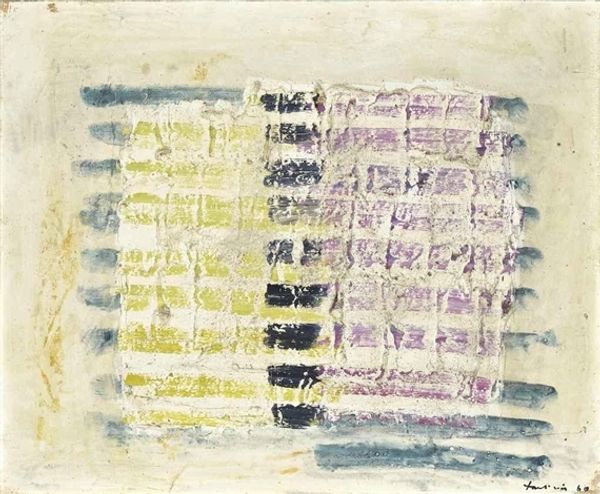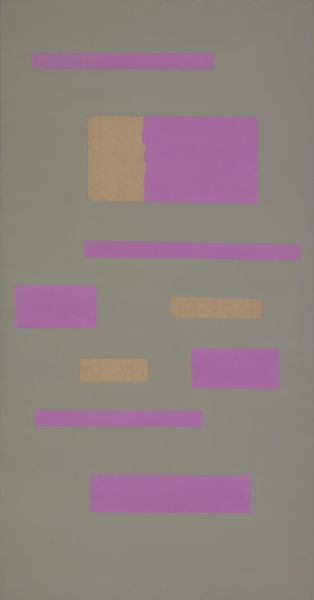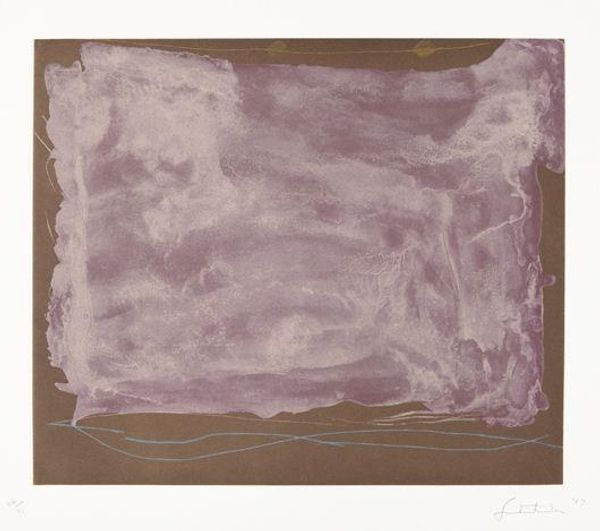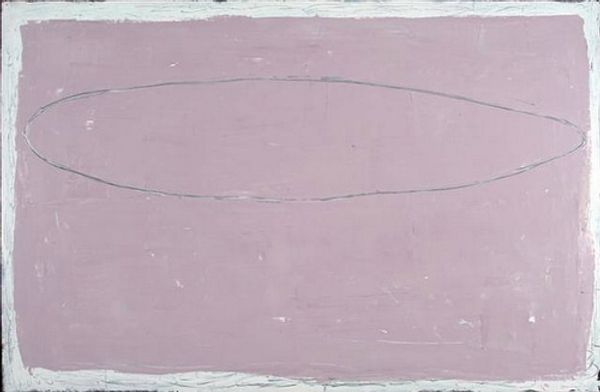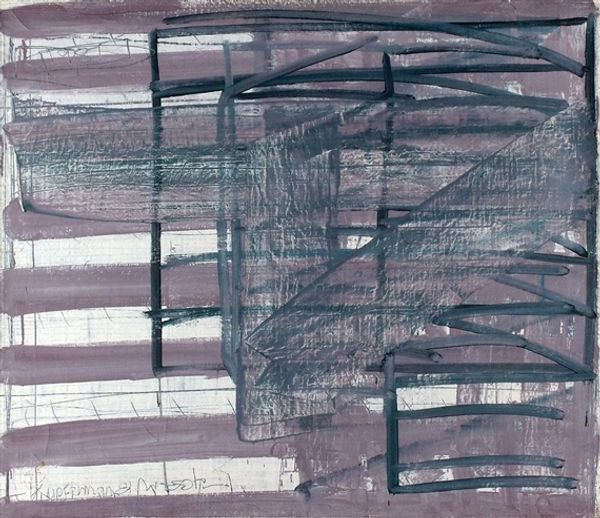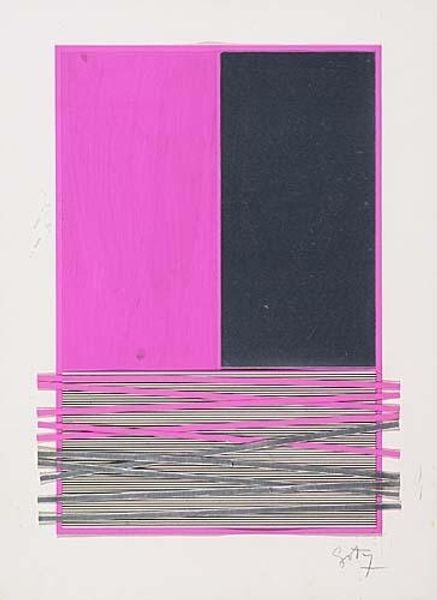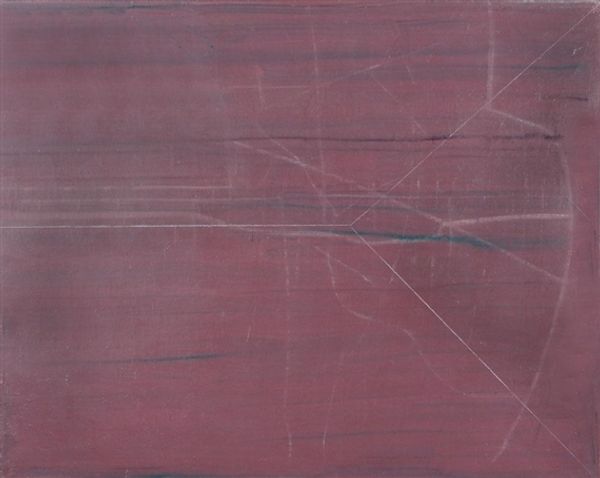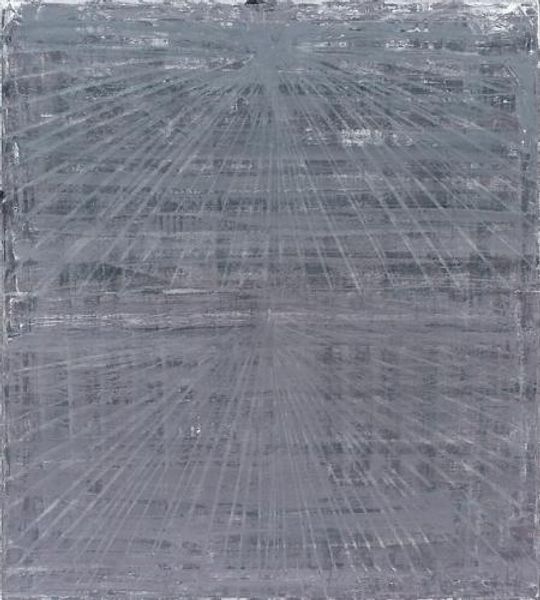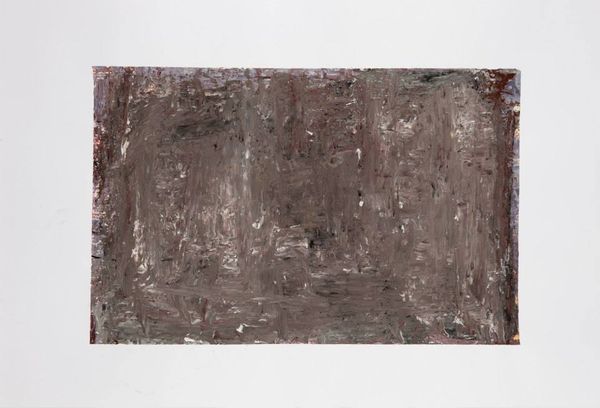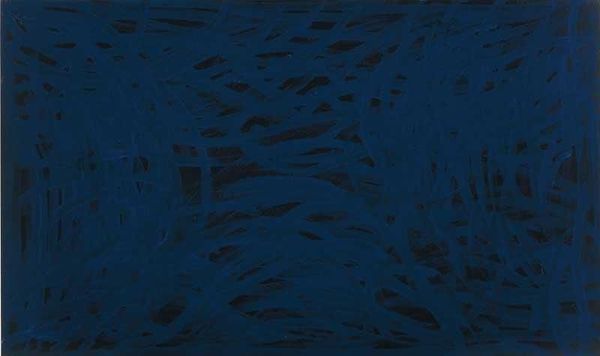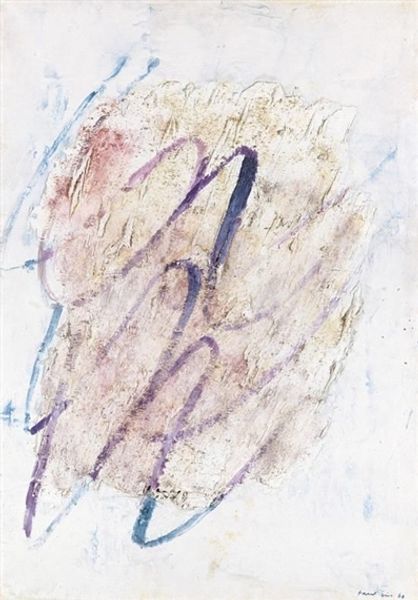
Copyright: Moshe Kupferman,Fair Use
Curator: I'm struck by how serene it is; the wash of lilac evokes a sense of quiet contemplation. Editor: Yes, this untitled piece by Moshe Kupferman, created in 2000, is quite calming. It’s mixed media—primarily ink and graphite—on what appears to be paper. The almost monochrome palette really allows the subtle textures to speak. Curator: Textures like layers of memories, wouldn’t you agree? These lines – repeated, overlaid – recall palimpsests or perhaps ancient writing tablets. Each mark echoes a presence, a history… what might have been. Editor: Interesting, because to me those grid-like patterns recall architectural structures—scaffolding, perhaps. I’m curious how Kupferman’s experience as a Holocaust survivor shaped his visual language, particularly his tendency to return to these repeated linear forms. Did he use abstraction as a tool for navigating trauma and historical loss? Curator: The grid resonates. It symbolizes structure, certainly, but a fragile one, about to disappear. Each slight break, each erasure or redrawing of a line whispers of impermanence, the vulnerability of ordered systems in the face of chaos. Editor: Absolutely, and I wonder about its connection to broader narratives of displacement and identity. For marginalized communities, the grid – often seen as a symbol of control and order – can be an oppressive structure that dictates movement and visibility. How can we reclaim such structures as spaces of resistance or creativity? Curator: Thinking along those lines, it does seem like the overall image resists complete clarity. A quiet work, it asks us to contemplate those traces of what's missing and those remnants of the systems—visible or not—that underpin what seems like “nothing”. Editor: Kupferman offers not answers, but prompts—ones that can start conversations that span history, philosophy, and even our present day. The artwork is as much about the conversation it ignites as it is a static object. Curator: A quiet insistence for meaning, woven from loss and remembrance. I'm seeing the image anew through your social lens. Editor: And you have deepened my understanding of Kupferman's symbols; an experience in the power of dialogue.
Comments
No comments
Be the first to comment and join the conversation on the ultimate creative platform.

